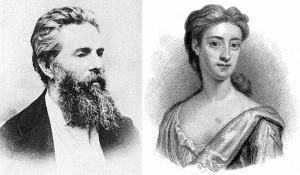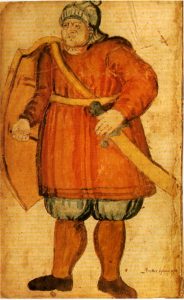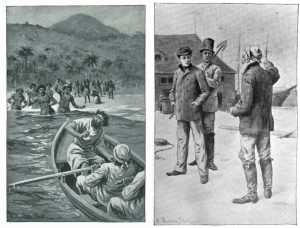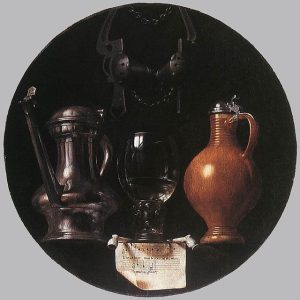Cannibal Continuity: Social Cannibalism in Melville and Coates
Herman Melville’s Typee depicts cannibalism at a time when the practice’s nature, and even its existence, is an uncertain question for its contemporary readers.
Rankine and The Pronoun Dreamworld: The Creation of Compassion
In her series of lyric essays Citizen: An American Lyric, Claudia Rankine employs the pronoun “you” in both an accusatory and uniting fashion. The feelings of Black people are often neglected and scorned, and Rankine’s direct address to the reader highlights the microaggressions they experience.
Crime and Punishment: Whatever Happened to the Man of Tomorrow?
“God is dead.” So said Friedrich Nietzsche in 1882’s The Gay Science, but for some, God had been dead long before Nietzsche wrote His death into the public consciousness and put in His place stood a new breed of men, the Übermensch.
Rorschach’s Hypocrisy: The Moral Ambiguity of Watchmen’s Black and White Antihero
From the saturated pages of Watchmen emerges Alan Moore and Dave Gibbons’ antihero protagonist Rorschach, a stark representation of black and white against the vivid colouring of Watchmen’s setting and other characters.
Herman Melville’s Typee and Margaret Cavendish’s The Blazing-World: A Comparison
There are many similarities between Herman Melville’s 1846 novel Typee and Margaret Cavendish’s 1666 novel The Blazing-World. Both texts focus on an outsider who is given an intimate view of a society fundamentally different from their own.
Outlawed but Not Alone: Friendships Out of Bounds in Grettir’s Saga
This essay will be interested in how Grettir’s friendships function when they are removed from their moral and societal contexts.
Queering Melville
The largely negative outcomes of these romances seem to suggest Melville’s internal grappling with the idea that an openly queer lifestyle was not achievable or accepted in the time in which he lived and wrote.
Gender? I Hardly Know Her Exploring the Hyperreality of Gender and Sexual Identities
[…] this essay examines how gender and sexuality, as imitations without originals, reapproximations of an invented ideal, generate their own hyperreality, a simulation endlessly reinforced by the belief that it hasn’t already encompassed us all.
Painting with Words – The Illusive Art of Representation Appearance and Reality From the Perspective of Visual and Literary Art in Zbigniew Herbert’s Still Life with a Bridle
The relationship between visual and literary forms of art and how they inform appearance and reality in Zbigniew Herbert’s Still Life with a Bridle demonstrate the ways in which representations can be both illusive and illuminating.
Loving Her Was Red: The Dichotomy of Love and Desire According To Sappho and Taylor Swift
Both women display remarkable agency as they examine the undervalued world of female love and desire; both women, as Swift says in “Fearless (Taylor’s Version)”, invite us to dive into this world with them “head first, fearless”.









